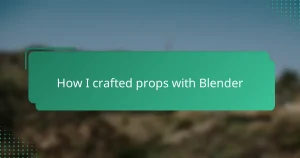Key takeaways
- Substance Painter offers intuitive tools for creating realistic textures on 3D models, enhancing visual depth and authenticity.
- Proper preparation, including clean UV layouts and baking maps, is essential for effective texturing and can prevent errors during the process.
- Embracing imperfection and focusing on subtle details, such as scratches and weathering, significantly boosts realism in sci-fi props.
- Utilizing advanced tools like Particle Brushes and Procedural Masks allows for dynamic texturing and efficient creation of complex effects.
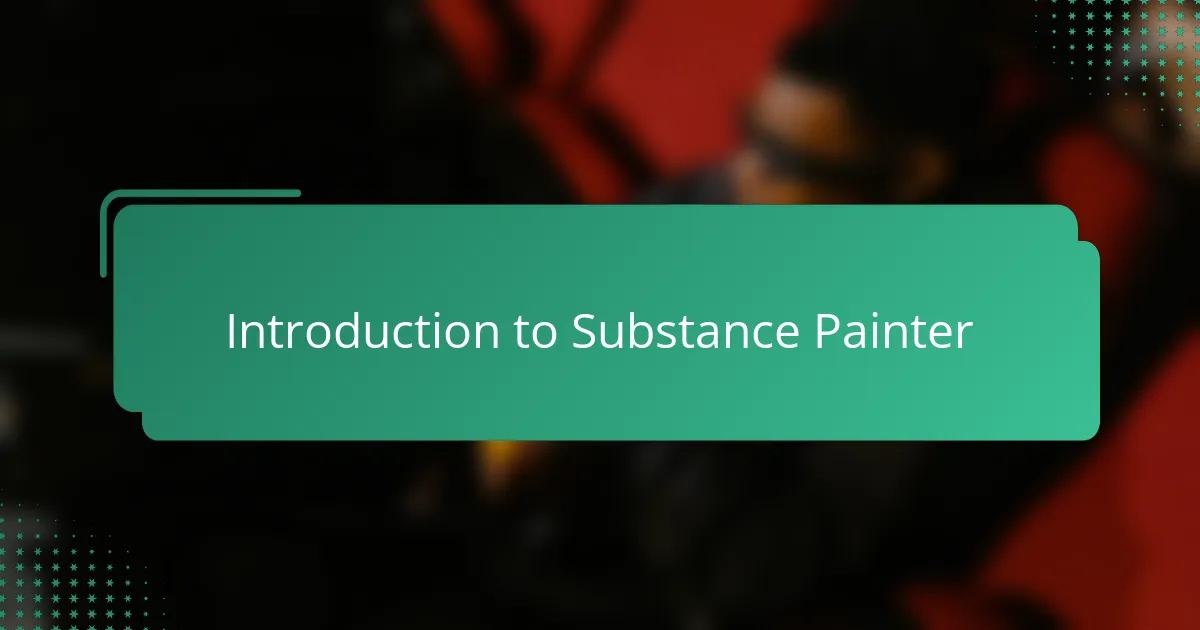
Introduction to Substance Painter
When I first discovered Substance Painter, I was amazed by how intuitive it felt. The software offers a powerful way to create highly detailed textures directly onto 3D models, which is essential for bringing science fiction props to life. Have you ever struggled with making your models look truly realistic? Substance Painter might just be the tool you need.
Working with Substance Painter feels like painting in real life, but with endless possibilities. You can layer materials, add weathering, and tweak every detail with precision. I remember spending hours experimenting with its smart materials and masks—each time uncovering new ways to enhance my models’ depth and authenticity.
What sets Substance Painter apart, in my experience, is its integration with real-time feedback. As you apply textures, you immediately see how they interact with light and shadow on your model. This instant visualization makes the creative process feel dynamic and, honestly, quite addictive. Have you tried it yet? It changes how you think about texturing entirely.
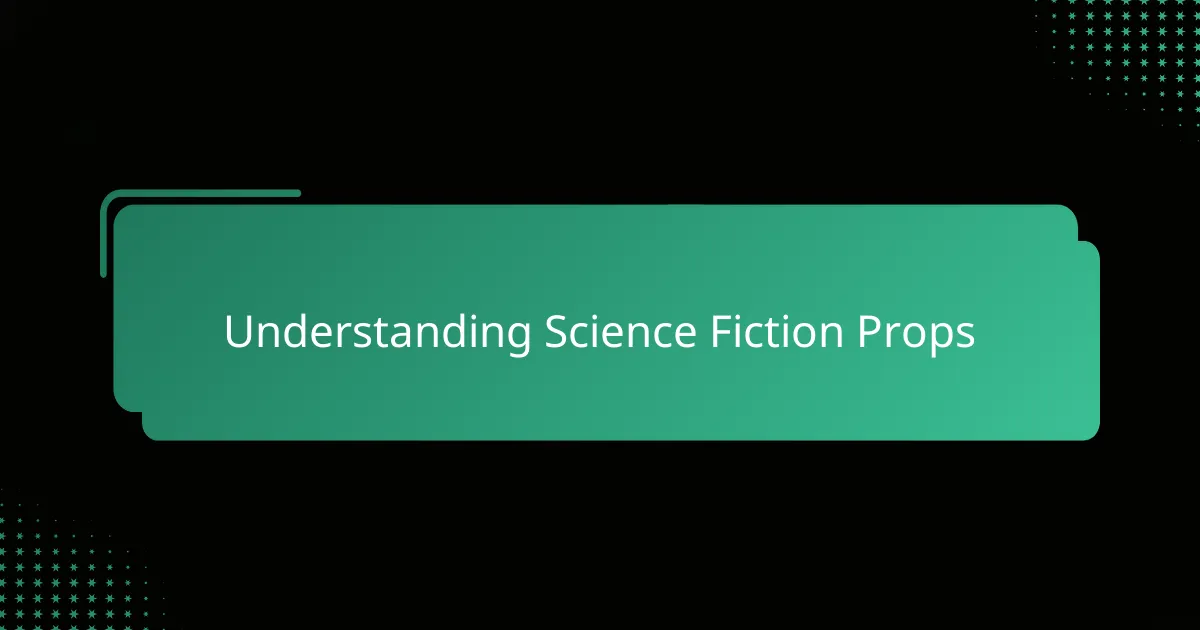
Understanding Science Fiction Props
Science fiction props always fascinate me because they blend imagination with a sense of believability. When I look at a well-crafted prop, I ask myself: does it tell a story beyond its design? That’s the key—these items aren’t just futuristic gadgets; they carry the weight of the worlds they belong to.
To me, understanding these props means appreciating how every scratch, glow, or material choice contributes to their authenticity. I’ve noticed that even the smallest details, like worn edges or subtle rust, make a prop feel like it’s been through countless adventures. Isn’t that what makes sci-fi so compelling—the escape into a universe that feels lived-in?
Reflecting on my experiences, I realize that science fiction props are more than objects—they’re bridges between creativity and storytelling. Before jumping into texturing, I spend time imagining how the prop functions within its fictional context. That mindset shapes every stroke of paint and layer of texture, transforming a 3D model into a believable piece of another world.
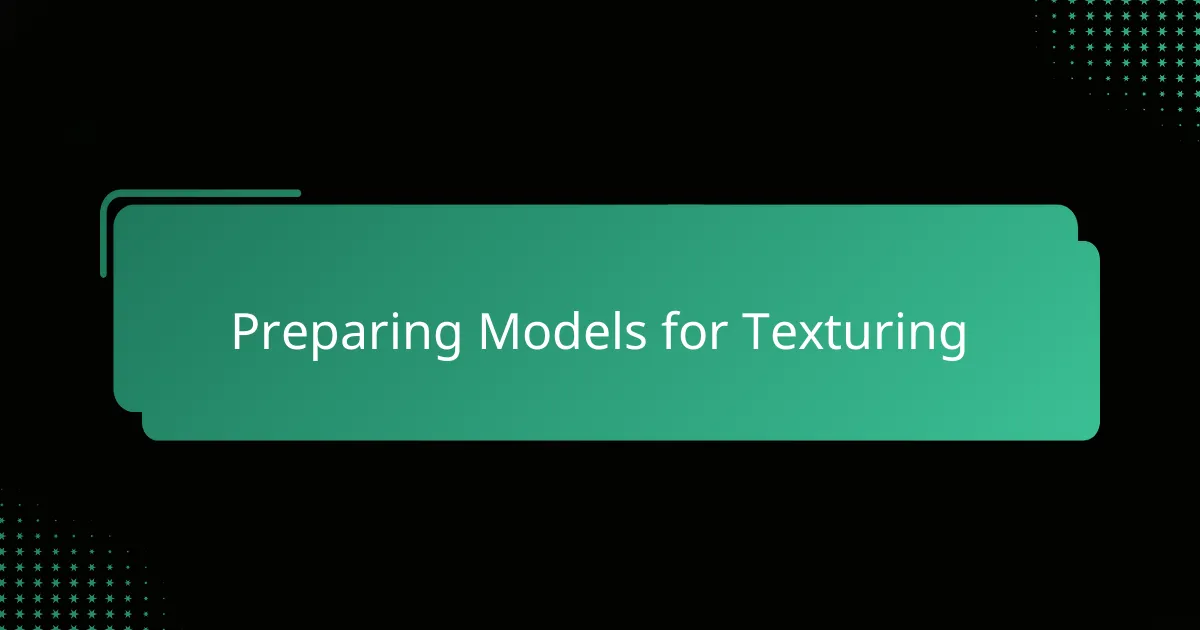
Preparing Models for Texturing
Getting a model ready for texturing in Substance Painter is like setting the stage before the main performance. I always start by carefully checking the mesh for any stray vertices or weird geometry because nothing breaks immersion faster than texture stretching or seams popping out. Have you ever zoomed in only to find a pixelated mess? That usually traces back to the UV layout, so I make sure my UVs are clean and evenly spaced.
One thing I’ve learned is that proper UV unwrapping is the unsung hero of a great texture. It might feel tedious, but taking time to organize the UV islands and avoid overlapping truly pays off when you start painting. I remember a project where sloppy UVs meant constantly fixing texture warping, which slowed me down big time—definitely a lesson learned the hard way.
Before jumping into Substance Painter, I also like to bake multiple maps like normal, ambient occlusion, and curvature. These maps act like cheat codes, helping the software understand how light interacts with the model’s surfaces. It’s a bit like prepping your canvas; the better the groundwork, the richer the final textures come out. Doesn’t that attention to detail make all the difference? To me, it absolutely does.
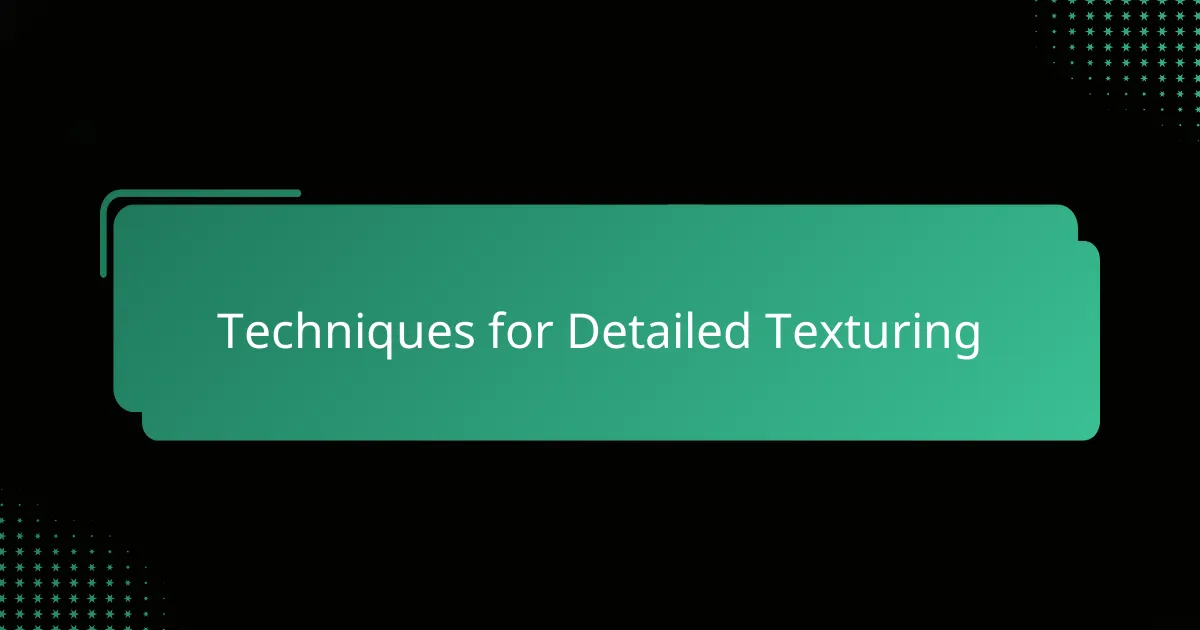
Techniques for Detailed Texturing
When it comes to detailed texturing in Substance Painter, I’ve found that using layers strategically is a game changer. By stacking different materials and adjusting their masks, I can create complex surfaces that feel genuinely tactile—like metal panels scarred by battle or alien tech glowing with mysterious energy. Have you ever noticed how just a subtle scratch or dirt buildup can make a sci-fi prop leap from flat to fascinating?
Another technique I swear by is leveraging the curvature and ambient occlusion maps baked earlier. These maps act like guides, helping me place weathering only where it makes sense—edges get chipped, recesses collect grime, and smooth parts remain pristine. Honestly, this step saved me countless hours and made my props look naturally aged without overdoing the effect.
I also love experimenting with procedural brushes and smart materials to speed things up while keeping the details rich. For example, I once layered a rust effect beneath a scratched metal overlay to simulate corrosion eating through protective plating. Seeing that unexpected realism unfold on my model was incredibly satisfying. Don’t underestimate how much these subtle touches can tell a story all on their own.
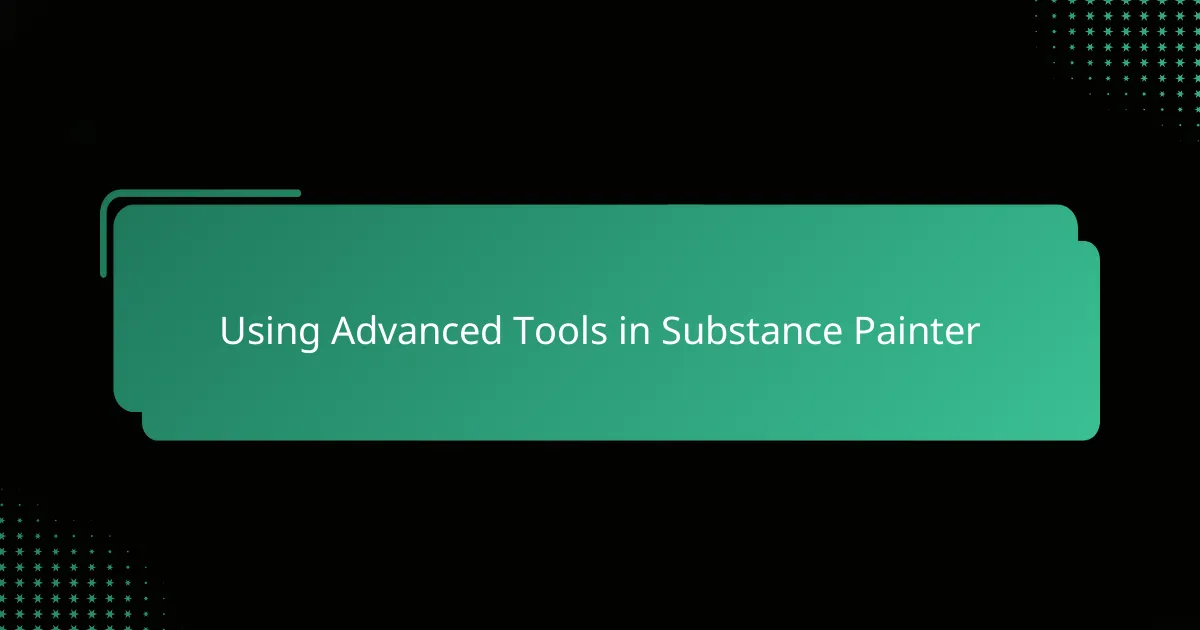
Using Advanced Tools in Substance Painter
One of the advanced tools in Substance Painter that really changed how I work is the Particle Brush. Using it to simulate dust, sparks, or even tiny impacts added a dynamic layer of realism to my sci-fi props. Have you ever tried painting effects that react to gravity or surface angles? It’s like giving your model its own little weather system, and honestly, it made me rethink what texturing could do.
Another feature that has become indispensable for me is the use of Procedural Masks. These masks let me create wear and tear effects that automatically follow the model’s contours, which saves so much time compared to manually painting every detail. There was this one time I layered several procedural masks to simulate battle damage across an extraterrestrial device—seeing how easily the effects adapted to complex geometry felt like discovering a secret shortcut.
Lastly, I can’t talk about advanced tools without mentioning the powerful Anchor Points system. This lets you link effects and materials in ways that respond dynamically as you update your model. At first, it seemed complicated, but once I embraced it, I started crafting textures that evolved with each tweak. Have you noticed how keeping your workflow flexible can spark unexpected creativity? For me, that flexibility in Substance Painter made all the difference.
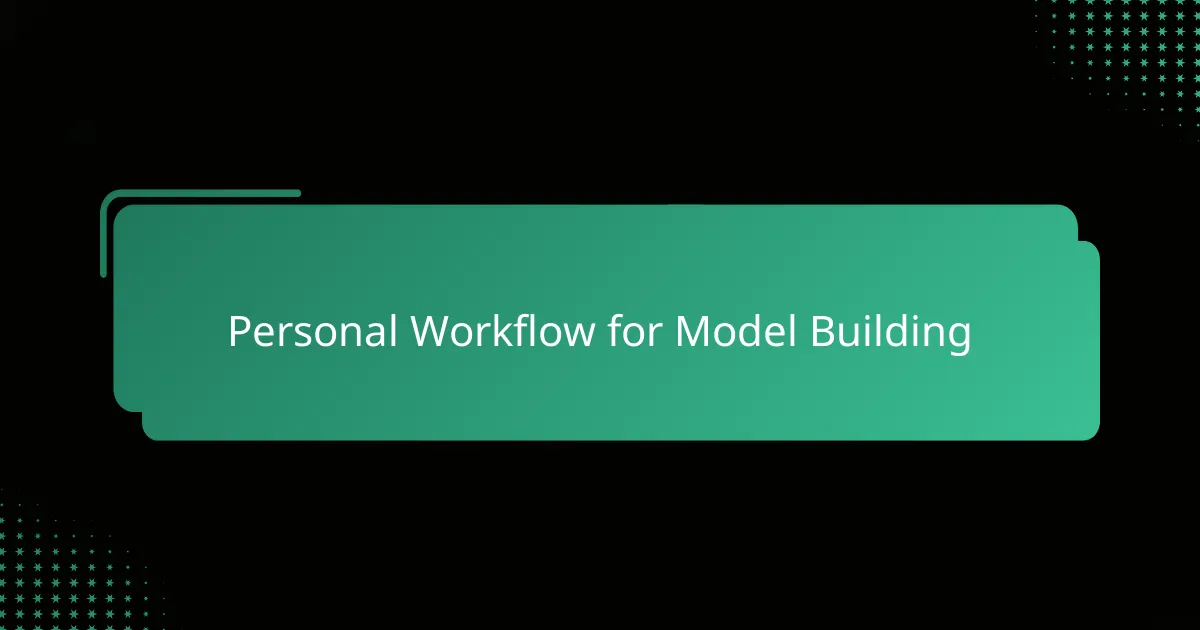
Personal Workflow for Model Building
When I build detailed models, I like to break the process down into manageable steps that keep me focused and creative. I find that starting with a clear mental blueprint of the prop helps me stay organized—asking myself what story the model needs to tell before I even open Substance Painter. Have you ever caught yourself lost in details without a clear plan? That’s when workflow discipline really saves the day.
Another habit of mine is setting checkpoints after each major stage—like finishing the base mesh, completing UVs, or baking maps. This way, I can assess progress and avoid surprises later. I remember one project where skipping these small pauses led to redoing hours of work because I missed a critical mapping error early on. It’s a lesson that shaped how I now pace my workflow, adding a sense of control and confidence.
I also allow time to experiment within my workflow, blending structured steps with spontaneous creative sessions. Some of my best textures and effects emerge when I step back and let intuition guide material layering or subtle weathering details. Isn’t it amazing how creative breakthroughs often come when you least expect them? Balancing discipline with flexibility has made all the difference in my modeling journey.
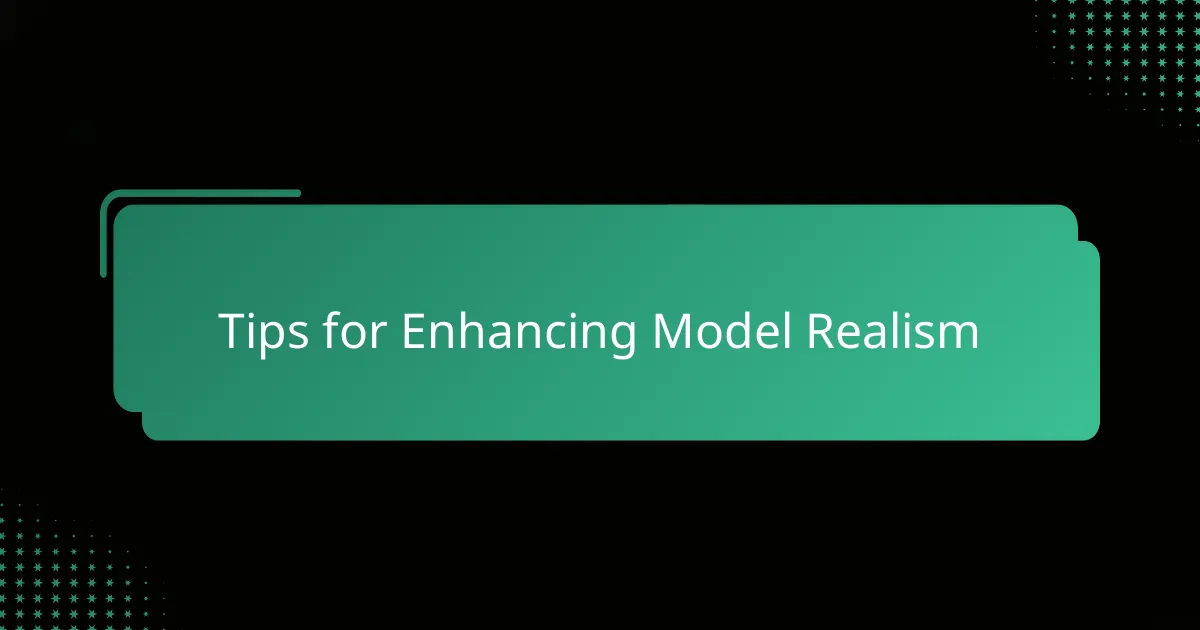
Tips for Enhancing Model Realism
One key tip I’ve learned for boosting realism is to embrace imperfection. Perfectly clean surfaces might look tempting, but real-world objects—especially sci-fi props—carry history in their wear and tear. Adding slight scratches, smudges, or dirt in just the right places transforms a model from synthetic to believable. Have you noticed how a few well-placed imperfections can tell an entire story about a prop’s past?
Lighting interaction also makes or breaks realism. I always pay close attention to how my materials respond to light, tweaking roughness and metallic values to mimic real surfaces. It’s fascinating how subtle changes here can make metal gleam coldly or plastic appear matte and weathered—details that really sell the illusion. Isn’t it amazing that such small adjustments can pull a model out of the digital realm and into a tangible one?
Don’t underestimate the power of layering subtle effects, either. I remember once layering fine dust over a borrowed paint layer to simulate a prop that’s been stashed away on a ship for years. That tiny addition gave the model a depth and story I hadn’t originally planned. How often do you find that minor details unexpectedly breathe life into your projects? For me, those moments are what keep texturing endlessly rewarding.

